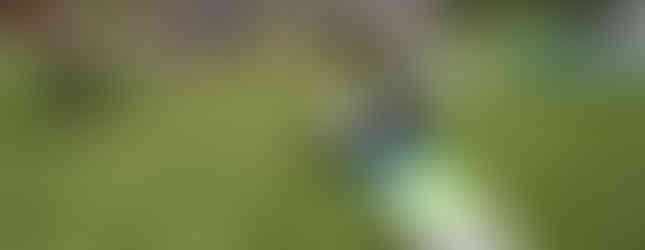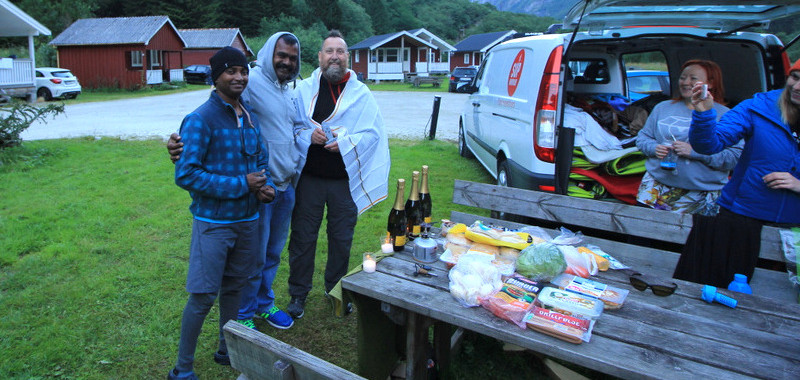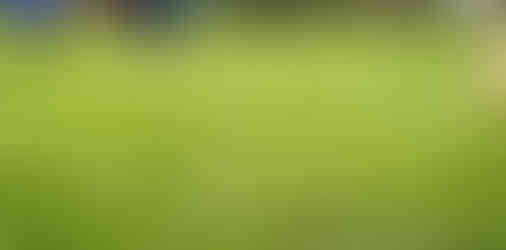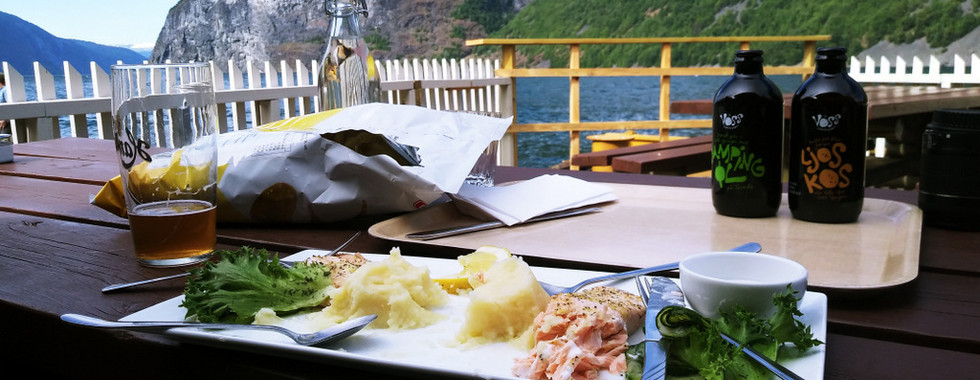SUP Norway - First Stand Up Paddle Expedition in 2018
- Kumaran Geopaddler

- Aug 1
- 7 min read
Norway, Scandinavia. The land of the Midnight Sun. And not very long ago, a distant dream. I have always loved Norse mythology, and have read a lot about Thor, Loki, and the Bifrost, and have admired the Vikings for their bravery. However, this trip would have me stand-up paddling in the glacial fjords of Norway, the very place the Vikings set sail.

After finalizing the dates of the expedition with Titus back in April, my plan was set in motion. From April to June, I made all the preparations. I would be going to Norway along with my group member Sathish. A few years older than me, he hails from a fishing business background, operating fishing boats from Puducherry and Kasimedu fishing harbour. Thanks to Titus’s generosity, he was lucky to get a discounted price for the expedition; I also took care of his paperwork alongside mine.

I approached a travel startup called Pickyourtrails from Chennai, they helped me with my visa papers, stay at Gudvangen, and tickets to the Flåm Line, a scenic train route from Flåm (pronounced Flom) to Bergen. The plan was to fly from Chennai to Bergen, stay overnight, travel to the expedition point at Gudvangen, do the expedition, return to Gudvangen, take the Flåm Line from Flåm to Bergen, take a cruise ship from Bergen to Stavanger, and then take a flight back home to Chennai. Alongside the expedition, I was also excited to do a tour of Norway.
Bergen, Norway’s second-largest city, is also known to be the launching pad for the Vikings who went around the world in conquest. Surrounded by mountains, it is known as the city of seven mountains (not unlike our own Tirupati but the mountains are larger than the Eastern Ghats.) Today, it is a place well known for its shipping. Gudvangen, however, is a smaller village at the Nærøyfjord (pronounced Naa-ro-fi-ord) and near the Nærøydalselvi (pronounced Naa-ro-dahl-sel-vee) river.
In the Norse Land
Sathish and I left for Bergen and stayed in a beautiful room there near the railway station. As far as the weather is concerned, it rains for almost 250 days in a year. That’s around 8 months out of 12. Mindblowing, for someone from the Eastern Coast of India. No wonder we saw umbrellas everywhere.

The next day, we departed to Gudvangen by bus. I was amazed by the three and a half hour long journey; even though this was the mountain roads, the roads were straight as they had built tunnels everywhere. It didn’t feel like I was going to a high-altitude place, as whenever there was a mountain there was a huge tunnel through which the road would pass through. The bus even had Wi-Fi connection. The bus passed by Voss, a town that shares its names with a glacial water bottling company.
The population of Norway is very small, around 5.5 million people in total, almost half the population of Chennai. However, there are more than 3000 freshwater rivers, which everyone takes great care of. The people have very high levels of civic sense; I saw the police only once and that too in the airport. Everyone here was self-sufficient, like back home, we cannot expect assistants and helpers to do our work for us.
The Expedition - Stand-Up Paddling at Norway
Day 1 - A Viking's welcome by Titus
We went to Gudvangen Base where we were greeted by Titus. He introduced us to the crew, as people started coming one by one. Many people were in their 40s and 50s, mostly women, most of them from the US and UK, all of them extremely fit. He told us about the tent, expedition, food, and instructions on advanced paddling and safety. We had a welcome dinner that day where we cracked open a glass of champagne. We would be paddling to Nærøyfjord, a UNESCO World Heritage site. Before departure we stocked up on snacks, supplies etc. from the local shop here. Satish presented Titus with a dhoti, and I gave him a Paddle for Future t-shirt. Titus gave us a Speider kopper (scout cups), which are for boy and girl scouts to hang from rucksacks when out on tour. They are made with birch tree wood. In Celtic mythology, birch is also a tree of beginnings and came to symbolise renewal and purification. We slept in the King tent that night.
Day 2 - (9 Km) Gudvangen Base to Odnes
After a safety session, we loaded our gear in the SUP Norway SUV, and went to the Gudvangen launch point. The first day was a 9 kilometer paddle from Gudvangen to the southernmost part of Nærøyfjord. This fjord is a branch of the Sognefjord (pronounced Sog-ne-fi-ord), the king of fjords. With the fjord being as narrow as 500 meters wide at some places, the experience of paddling between high mountains was magical, like it was right out of a children’s fairy tale. Our first destination was Odnes. After pitching our tents on the soft grass field behind the beach, we splashed under Odnesfoss, a beautiful waterfall just around the corner. In the evening, we huddled around the camp-fire, and later crashed into our tents, listening to the cascading of the distant waterfalls.
Day 3: (15 Km) Wild Camp
We woke up early and showered in the waterfalls. The water there was extremely sweet, and we filled up our bottles with it. The purest waters, direct from source. After breakfast, we broke camp and paddled the second half of Nærøyfjord. I was mesmerized by the glassy waters and the gigantic mountains, I would paddle two strokes and would take pictures. Paddle again, take another set of photos. For lunch, we stopped at Dyrdal, a tiny village only accessed by boat. Tiny as it seems, it was one of the major battlefields where it bore the brunt of the Axis powers’ attacks. After a traditional Norwegian lunch, we started paddling towards Aurlandsfjord, a branch of Sognefjorden. We had to face around 3 kms of headwind paddling. The fjord is narrow yet deep; the widest point is around 1.2 kilometers and the deepest point here is around 980 meters. Upon reaching Aurlandsfjord (Our-lands-fi-ord), we wild camped close to a point where 3 fjords meet right on the shoreline (tri-fjord sangamam). The place is called Åtnes.
04 - (12 Km) Aurlandsfjord to Undredal Village

We rose early, and paddled further into Aurlandsfjord. The cliffs on either side were peppered with farmhouses and goats. I wonder how they got there to build the houses. The goats, on the other hand, are pros in steep rock climbing, so that’s no surprise. Today’s downwinds were like an extra grace for yesterday’s headwinds. After paddling for 12 kilometers, we reached Undredal (pronounced Un-dre-dal), a beautiful village which is also a popular tourist destination. Undredall is famous for its goat produce, including meats, sausages and cheeses. The brown goat cheese or Brunost is a creamy soft cheese made of goat milk, and is an important Norwegian cultural identity. We had a great dinner at the fjordside restaurant, and crashed at our campsite.
Day 5: (16 Km) Undredal Village to Dyrdal beach to Odnes
We would be changing directions, paddling back up North. The pleasant downwinds of yesterday turned into strong headwinds, as we re-entered Nærøyfjord. We paddled to a beautiful sand beach at Drydal, and had fire-grilled Pølser or red hotdogs for lunch. We took a short break there, and I tried snorkelling and a bit of swimming there. We had an option to choose our campsite, and all of us chose to go back to our beautiful waterfall camp at Odnes (the other options did not have waterfalls, and we didn’t want to miss that.)
Day 6: (9Km) Odnes to Gudvangen Base
Everything comes to an end, and so does our expedition. Sathish and I had to catch the train from Flam, so we bid an early goodbye to the team and paddled back to our start point. We were literally the only ones in the fjords, and the early morning waters were super glassy; we could see the reflection of the mountains like a mirror was placed under it. We also spotted a few seals. Downwinds supported our last lap of the expedition, and we almost effortlessly paddled to reach our campsite. Once the finishing formalities were done, we started towards Gudvangen. The expedition was over.
But our trip was not!!!
The Exploration
We took the bus from Gudvangen and came to Flåm. Flåm is a beautiful small village located in the inner part of Aurlandsfjorden. The main highlight is the Flåm Line, which is a tourist attraction in itself. The railway line between Flåm and Myrdal crosses through many steep hills and tunnels. It was like riding over the Alps of Switzerland. Given that the journey itself is the destination, the tickets had to be booked a minimum of three months in advance. Sitting in the train, we passed by the Kjosfossen (pronounced Choos-fossen) waterfall and the Rjoandefossen (pronounced Ryu-onder-fossen) waterfall, where there were 2 minute stops. We then had a 140 feet drop - It was just like a roller-coaster, but in real time. We had traversed through an altitude difference of 863.5 meters.
We stayed in Bergen for the night. The next day, Sathish and I went to Madras Cafe to have good South Indian food. Well, the heart wants what the heart wants. We chatted up the restaurant owner, and we got to know that he had a PhD in Chemistry and hailed from Srilanka. After food, we went downtown, and went to Gullfjellet (pronounced Gull-filla), the highest point in Bergen by cable car. The topography was undulating relief, a beautiful sight to see. I later visited the University Museum of Bergen to the museum, wherein I saw displays of Norway’s Natural and cultural history, depictions of Norwegian resistance to the German occupation in World War 2, letters from soldiers, photographs of horses that served in the war, etc. It was fulfilling to both the geologist and the history enthusiast in me.
The next day, we set off to Stavanger by cruise ship. It was my first cruise experience. We saw people from all around Europe load their cars, caravans, and camper vans in the cruise and travel around Norway. We crossed a lot of bridges, some of them appearing to be close encounters but they were safe. On the way we saw huge ship tankers taken for offshore shipping. Once we launched into the ocean, I could see the North Sea in her full form and glory. It reminded me of the first time I saw the Ganges at Devprayag. The powerful open waters of the North sea with huge surging waves instantly gained my reverence. At Stavanger, we once again had Indian food, and rested for the night.
Stavanger is the third largest city and the oil capital of Norway. Naturally, I was piqued. The next day, I went to the Norwegian Petroleum Museum. To a petroleum geologist, it was heaven. There were photographs, maps, replicas, models, and charts of the oil and gas exploration in the North Sea. Like a kid in a candy store, I lapped it up all. From the museum, I went to Preikestolen (pronounced Pre-iki-stolen), a cliff above the Lysefjorden (pronounced Leese-fi-ord). It looked familiar because I had seen this before when I watched the movie Ko.
Home sweet home calling, and we left the Scandinavian paradise via Denmark to Chennai.





















































































































































































You brought Norway alive with your words. The fjords, the waterfalls, the mountains… I could see them all.